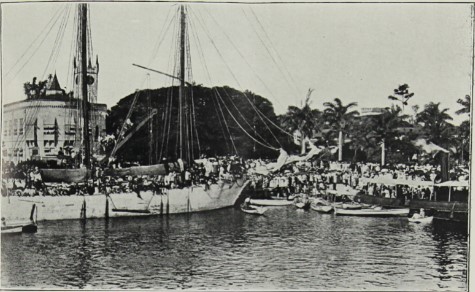Barbados

Barbados had been a British Colony for almost 300 years by the outbreak of the war. When there was a call for volunteers in August 1915, Barbados exceeded its quota with over 2000 men signing up. Of these, 831 were selected to join the British West Indies Regiment. However, some of these men would later send a petition to the Barbados recruitment committee to complain that the Regiment was being denied pay increases and that colour proved to be a barrier to becoming a commissioned officer.
As there was no full military garrison on the island at the outbreak of war, its defence falling to its police force of a little over 300 men and a volunteer force over just under 200 men (a figure that would later increase), it was an attractive target for the German navy. The Karlsruhe targeted the shipping lines between Barbados and Trinidad, until it sunk due an on-board explosion in early November 1914; this fact that was not discovered by the British until March 1915, meaning that the threat was perceived to continue for far longer than it actually did. Defences were constructed for the capital Bridgetown, which were replaced with a proper naval patrol, and heavy guns were installed in 1917 owing to the threat of German submarines.
In contrast to other West Indian colonies, Barbados had a strong economy during the war as there was an increased demand for sugar, the island’s main export. The importance of this commodity was demonstrated by the British Government’s acceptance of the offer made by the government of Barbados of 1000 tons of sugar, in addition to Barbados providing military support. This island continued to make contributions throughout the war, sending £20,000 worth of sugar to Britain and providing £80,000 of financial support. Charities also raised between £28,000 and £30,000 funds for the war and provided medical goods to the war effort.